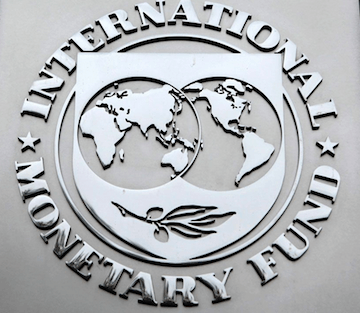
By Ebenezer Ashley (PhD).
Assessment of scientific approaches to the measurement of inflationary levels and economic growth remains vital to understanding and appreciating happenings or developments in countries across the globe. In view of the foregoing, the current publication is dedicated to examining empirical works in the subject area.
Attari and Javed (2013) examined the relationship among three major macroeconomic variables within the Pakistani economy. These variables included inflation rate, economic growth and government expenditure. The researchers disaggregated government expenditure into government current expenditure and government development expenditure. Available time series data covering the period 1980 through 2010 were used in the research. Relationship among the key research variables was tested using econometric tools such as the Augment Dickey Fuller (ADF) unit root test, Autoregressive Distributed Lag (ARDL), Johansen Cointegration and Granger-causality test.
Analytical outcomes of Attari and Javed’s (2013) research revealed the existence of long-term relationship among inflation rate, economic growth and government expenditure; while positive externalities and linkages were yielded from government expenditure.
However, in the short-run, inflation rate did not have an effect on economic growth; albeit government expenditures demonstrated an effect on economic growth. Results from the causality tests revealed the existence of unidirectional causality between inflation rate and economic growth; and between economic growth and government expenditures.
Mishchenko, Naumenkova, Mishchenko and Ivanov (2018) sought to analyse the influence of inflation on economic growth; and to substantiate the actual directions of increasing effectiveness of anti-inflationary policy of central banks. Specifically, Mishchenko et al. (2018) analysed the relationship between rate of inflation and real GDP growth to determine the limit of inflation; the excess of which the researchers believed has negative effect on growth of an economy.
The study was developed using data accessed from the International Monetary Fund (IMF) on one hundred and fifty-eight (158) economies.
Findings from the research conducted by Mishchenko et al. revealed the 6% inflation recorded in the global economy during 2010 through 2017 remained marginal value of the inflation rate; a rate beyond which economic growth rate declined or slowed down. The researchers determined the threshold for inflation in the Ukrainian economy at 4.51%.
This was based on the determination of inverse relationship between rate of inflation and real GDP growth; and empirical computations covering the period 1996 through 2017. The study revealed the inflation rate target set by the National Bank of Ukraine was above the level computed as the threshold of inflation (4.51%).
Further outcomes from the empirical study by Mishchenko et al. showed more direct and tight relationship between nominal GDP growth and rate of inflation. However, the relationship between real GDP growth and rate of inflation was found not to be more direct and tighter. The researchers provided illustrations to justify and substantiate the need for the GDP deflator to form the basis of such analysis rather than the consumer price index. The research revealed the constraints on economic growth occasioned by deflation remain much less than those of inflation.
Adaramola and Dada (2020) drew on the Autoregressive Distributed Lag to assess the effect of inflation on the economic growth prospects of Nigeria. The research was developed based on the ensuing selected research variables: interest rate, inflation rate, real GDP, degree of openness of the economy, exchange rate, money supply and government consumption expenditures during the period 1980 through 2018.
Findings from the research revealed the impact of inflation and real exchange rate on economic growth was negative; and this negative relationship was significant. However, the effect of interest rate and money supply on economic growth was positive and significant.
Mishchenko et al. measured the relationship between real GDP growth rates and the indicator characterising the gap between the growth rates of M3 and inflation which provide actual reflection of the real dynamics of money supply.
The foregoing relationship was measured to enhance effectiveness of the Central Bank of Ukraine in the pro-cyclical monetary policy intended to support growth of the economy. Based on the analytical outcomes, Mishchenko et al. concluded, the Ukrainian government’s resolve to artificially squeeze money supply during 2009; and 2014 through 2017 culminated in significant decrease in the level of monetisation of the economy by 22% during 2017 comparative to 2013.
Adaramola and Dada (2020) noted the influence of other variables than inflation on growth of the Nigerian economy. However, results from the causality test revealed unidirectional relationship among interest rate, exchange rate, government consumption expenditures and GDP; albeit no causal relationship was established between inflation and the degree of openness on one hand, and gross domestic product on the other.
Following the study outcomes, the researchers recommended the need for pragmatic efforts towards inflation targeting to forestall adverse effects of such expeditions by monetary authorities; and to assure determination of a tolerable rate, useful to economic stimulation and growth in Nigeria.
Zivkov et al. evaluated the effect of inflation and inflation uncertainty on growth of selected economies. The study was focused on eight economies selected from central and eastern Europe. The series for inflation uncertainty were created through the examination of several Generalised Autoregressive Conditional Heteroscedasticity (GARCH) models. These models were combined with three distinct distribution functions. T
he Bayesian quantile regression framework was employed to evaluate the non-linear impact of inflation and inflation uncertainty on economic growth. The study outcomes revealed the impact of inflation on GDP growth was negative. However, the negative impact was significantly smaller, comparative to the effect of inflation uncertainty on GDP growth.
Test results from Zivkov et al. confirmed the Friedman hypothesis; suggesting inflation in the sampled economies had indirect effect on GDP growth through inflation uncertainty. The research findings revealed, for countries with smaller economies such as Latvia and Estonia, the adverse impact of inflation uncertainty on GDP growth was more in both upturn and downturn conditions. Zivkov et al. noted these developments may be attributed to the two economies’ vulnerability to external inflationary shocks. For countries characterised by large economies, shocks emanating from inflation uncertainty negatively affected GDP growth only when growth in output was negative or very slow.
Friedman’s (as cited in Zivkov et al.) assertion that GDP growth is stymied by high and volatile inflationary levels provoked further research on these important macroeconomic variables in subsequent years. Fischer (as cited in Zivkov et al.) argued, growth is negatively impacted by economic uncertainty, arising from instability in the current account and budget; and inflation.
Friedman’s theory of inflation (as cited in Zivkov et al.) assumed inflation uncertainty is escalated by high and unstable inflationary trend within an economy. High inflation uncertainty has the potential to distort available information on price content. The latter hurts efficient allocation of limited national resources.
Separate works by Lyziak (as cited in Zivkov et al.) and Caglayan et al. (as cited in Zivkov et al.) asserted, it is rare for companies to identify investment opportunities that are profitable during inflationary periods; owing to their inability or difficulty in accessing and extracting useful information on relative prices of goods and services.
Moreover, inconsistencies and asymmetries in information gathered during periods of surging inflationary levels remain very high; leading to increased costs of external funds to economies. Many companies are compelled under the circumstance of increased information asymmetries and costs of funds, to postpone or abandon their intended fixed investment projects. This decision by companies tends to hurt economic growth through limited availability of funds for effective economic stimulation.
Apergis (as cited in Zivkov et al.) catalogued a number of channels through which inflation could impact on the growth of an economy. These include inflationary effect on structure of the tax system which transmits indirectly on investments; financial market activities; savings; distribution of human capital; and volatility in interest and exchange rates.
Grier and Grier (as cited in Zivkov et al.) contended, there is no theoretical consensus on the influence of inflation on economic performance since various empirical findings depict either positive, negative or neutral effect of average inflation on economic performance. The foregoing outcomes integrally apply to inflation uncertainty as well. That is, the effect of inflation uncertainty on economic growth could be either of the foregoing probable outcomes.
Jeric, Zovicic, and Dolinar (2020) were interested in analysing the quality of GDP growth and inflation forecasts by multiple forecasters of the Croatian economy. Forecast data on GDP growth and inflation developed by six distinct institutions during the period 2006 through 2015 were collected and analysed. Tests on efficiency and biasedness were conducted using the econometric framework developed by Davies and Lahiri. The model was applied using three-dimensional panel data set. The latter included multiple individual forecasters; forecast horizons and target years.
Jeric et al. (2020) followed the approach developed by Pesarana and Timmermann to determine directional accuracy of the research data. The researchers relied on minimal hepatic encephalopathy (MHE) values to determine the accuracy of the forecasts on a scale which compared with the forecast reported by the European Commission during 2016 for the European Union and Euro Area.
Forecasts on GDP growth revealed strong bias regarding the tendency to over predict growth of the economy. Biasedness was found to be inherent in inflation forecasting by all forecasters. However, this biasedness was determined to be less pronounced and statistically not significant for all forecasters.
Jeric et al.’s research outcomes revealed forecast inefficiency in relation to the analysis of both GDP growth and inflation. In all, the analysis suggested challenges associated with inflation forecasting were less stringent due to the application of specific monetary policy strategy. Further, inaccurate data on national accounts are often accompanied by prolonged revision process of data on GDP by the Statistics Office of the Croatian government.
Matthew (2021) contended, for investors and consumers in the stock and housing markets; and beyond, inflation always plays a major role in their investment and consumption decisions; as the purchasing power of the underlying investment and consumption currency weakens overtime, owing to rising price levels. The underlying factors of an economy during given fiscal periods determine rising and falling inflationary levels. It remains imperative for individuals to consider either saving or investing their funds whenever possible, so their funds could keep pace with inflation. Employees could also discuss cost of living adjustments with their employers, so their wage-earnings could help sustain livelihoods (Mendelson as cited in Matthew, 2021).
Osuala, Osuala and Onyeike (2013) adapted causality test to assess the effect of inflation on GDP growth in the Nigerian economy. The researchers relied on time series data accessed from the Central Bank of Nigeria’s Statistical Bulletin, Volume 22; and the official website of the central bank during the period 1970 through 2011 to examine the relationship between the two variables – inflation and economic growth, which was proxied by real gross domestic product.
Osuala et al. (2013) drew on the Granger causality test to measure the direction of the influence between inflation and GDP growth; whereas stationarity of the research variables was tested using the Augmented Dicker Fuller and Philip-Perron models. The research outcomes revealed the existence of positive relationship between inflation and GDP growth in the Nigerian economy; and this relationship was statistically significant; albeit the results showed no leading variable in the relationship between inflation and economic growth.
On the basis of the foregoing, Osuala et al. concluded, the effect of inflation on GDP growth was contemporaneous. Further, the existence of positive relationship between inflation and GDP growth affords the Nigerian government the opportunity to utilise the “unfortunate periods” of double-digit inflation to reduce the national debt by significant margin. The researchers argued, it remained economically profitable for the Nigerian government to inflate away the national debt rather than spend billions of naira on negotiations for ‘debt forgiveness.’
The empirical work by De Gregorio (1992) sought to evaluate the relationship between inflation and long-run growth of economies in Latin America. Data utilised in the research included statistics on inflation and growth per capita of GDP for the fiscal period 1951 through 1985. The units of analysis included twelve economies drawn from Latin America. Each observation, according to the researcher, corresponded to an average of six years. De Gregorio (1992) revealed the inflation phenomenon in Latin America was not new. However, the research revealed a worsened trend since the mid-1970s. During the research period, economies such as Brazil, Argentina, Bolivia and Chile recorded average inflation rates in excess of 50%.
Further, De Gregorio (1992) revealed aggravated inflation challenges arising from factors including macroeconomic imbalances for several years and debt crisis which the sampled and several other Latin American economies were grappling with. The research outcomes revealed the negative correlation between inflation and GDP growth per capita had grown stronger during the period. The list of twelve Latin American economies included in the research were Bolivia, Venezuela, Uruguay, Peru, Costa Rica, Mexico, Ecuador, Guatemala, Colombia, Chile, Brazil and Argentina.
Burdekin, Goodwin, Salamun and Willett (1994) relied on the panel estimation model to examine data collected on inflation and GDP growth from a collection of large sample of industrial and developing economies. The study revealed the impact of inflation on GDP growth was negative; and the negative impact was significant. However, the magnitude of the impacts was smaller for developing economies than for industrialised economies.
Chowdhury’s (2002) empirical assessment was focused on how inflation impacts on economic growth in the Indonesian economy. The researcher averred constraints on macroeconomic policy formulation within the Indonesian economy motivated conduct of the study. The fiscal constraint included rising government’s public debt and mounting pressures to maintain social expenditures; while the monetary policy included government’s preoccupation with maintenance of lower rate of inflation; and the pressing need to maintain sustainable liquidity level in an economy charactersied by depression.
Faria and Carneiro (2001) examined the short- and long-run effects of inflation on economic growth within the Brazilian economy. The latter was characterised by persistently high inflation during the research period. Findings from the research showed negative effect of inflation on economic growth in the short-run. However, in the long-run, inflation had no effect on economic growth.
The outcomes supported Sidrauski’s (as cited in Faria and Carneiro, 2001) famous assertion on the super-neutrality of money in the long-run; but cast a shadow of doubt on the implications of the model for separable utility functions in real money balances and consumption in the short-run; as affirmed by Fischer (as cited in Faria and Carneiro, 2001). Faria and Carneiro (2001) noted the possibility of their research outcomes supporting a category of utility functions in which consumption and real money balances are perfect complements.
Andrés and Hernando (1994) noted how inflation control remained the dominant strategy of monetary policies among western economies. This initiative of inflation control among western economies in monetary policy was believed to be firmly rooted in a belief shared by many economists and politicians that the costs associated with inflation are not negligible; and that, measures outlined to control inflation often yield positive outcomes; while economies are assured of higher per capita income in future when policies formulated to control inflation are well-implemented.
Chowdhury’s (2002) empirical examination of the relationship between inflation and economic growth sought to determine whether prevailing conditions have the potential to cause inflation in the Indonesian economy. This, the researcher noted, has the tendency to ease pressures on governments in relation to debt repayments while encouraging maintenance of social expenditures; and discouraging abrupt end to economic recovery through the implementation of tight monetary policy.
The analytical outcomes revealed, the absence of statistically significant relationship between inflation and economic growth made strong argument for a mix of more expansionary macroeconomic policy; and another argument regarding the fact that conditions that characterise the independence of central banks were non-existent in Indonesia. Chowdhury (2002) hinted on the premature nature of such institutional arrangements, especially when mechanisms for democratic oversight are structurally and practically remote in terms of implementation.
Andrés and Hernando (1994) noted persistent efforts by economists to provide estimates for costs of inflation. This is in spite of the absence of theoretical frameworks to provide explicit solution to the issue related to long-run effects of inflation on global countries. However, tremendous improvements in inflation control among some advanced economies in recent years weaken the foregoing assertion by Andrés and Hernando (1994). How to ensure effective inflationary control has remained the undisputed refrain among economists and policymakers across the globe since 1984. The Digest (1997) noted how a whisper of the “I-word” in the financial press by Mr. Alan Greenspan, former Chair of the United States Federal Reserve, caused panic in the stock markets across the globe.
The average rate of inflation recorded among the Organisation for Economic Co-operation and Development (OECD)-member countries during the period 1973 through 1984 was 13 per cent. This development resulted in macroeconomic distress among OECD-member countries; and policymakers in these economies were led to believe accelerated sustainable growth could only be encouraged in a tamed-inflationary environment. However, The Digest (1997) noted the availability of limited empirical research during the period to provide the needed support for this intuitive belief.
Fortunately, the scientific research conducted by Andrés and Hernando (1994) to evaluate the correlation between economic growth and inflation among OECD-member countries from 1960 through 1992 attempted to address this phenomenon. The researchers found temporarily negative effects of low or moderate inflation rates on GDP growth; with the potential of resulting in significant and permanent decrease in income per capita. The study revealed a percentage point reduction in inflation rate resulted in surge in per capita income of 0.5 per cent to 2 per cent. Andrés and Hernando (1994) asserted, their analysis left little room for interpretation. Inflation is not a neutral phenomenon and does not favour accelerated economic growth. Higher inflationary levels do not result in higher income levels in the medium- and long-term, the best periods to analyse the effects.
The negative correlation between rising inflation and rising income is believed to persist even when other factors are included in the analysis. Examples of these factors include population growth, schooling rates, constant advances in technology and investment rates. Andrés and Hernando (1994) found significantly negative correlation between inflation and economic growth, even after taking into consideration, the effects of supply shocks characteristics during the period of analysis.
The researchers argued, the benefits associated with lower inflation rates are great. However, the magnitude of benefits is dependent on the inflation rate. All else held constant, lower inflation rates produce higher productive effects, vice versa. To illustrate, suppose the inflation rate of an economy is 20%. Any attempt to reduce it by 1% may lead to an increase in growth by 0.5%. However, when the rate of inflation is 5%, increases in output may be 1% or even higher.
The foregoing analysis suggests it remains costlier for an economy characterised by low inflation rate to record 1% increase in inflation than it is for an economy with higher inflation rate to start with. Andrés and Hernando (1994) concluded, attempts by global economies to tame inflation and maintain its rate at an appreciable level could yield the desired dividend in the form of improved economic performance and higher per capita income in the long-run.
Dorrance (1963) averred, it is difficult to interpret the simple evidence of the relation between inflation and growth in gross domestic product. The difficulty becomes apparent when analysing the effects of pervasive influences such as the degree of inflation on phenomena which remain subject to other complex forces. Consistent with Dorrance (1963), Andrés and Hernando (1994) affirmed, analysis of the relation between inflation and economic growth leaves little room for interpretation. Nonetheless, several empirical studies have been conducted in recent years to explain the causative effect of inflation on growth in total economic output (Osuala et al.; Jeric et al.; Mishchenko et al.; Adaramola and Dada, 2020; Zivkov et al.).
Author’s Note
The above write-up was extracted from recent Publication on “Nexus between Inflation and GDP Growth” by Ashley, Andani, Sackey and Ackah (2024) in the International Journal of Business and Management (IJBM). DOI No.: 10.24940/theijbm/2024/v12/i1/BM2401-016
The post Trends in inflation and economic growth in global economies – Empirical Assessments appeared first on The Business & Financial Times.
Read Full Story















Facebook
Twitter
Pinterest
Instagram
Google+
YouTube
LinkedIn
RSS